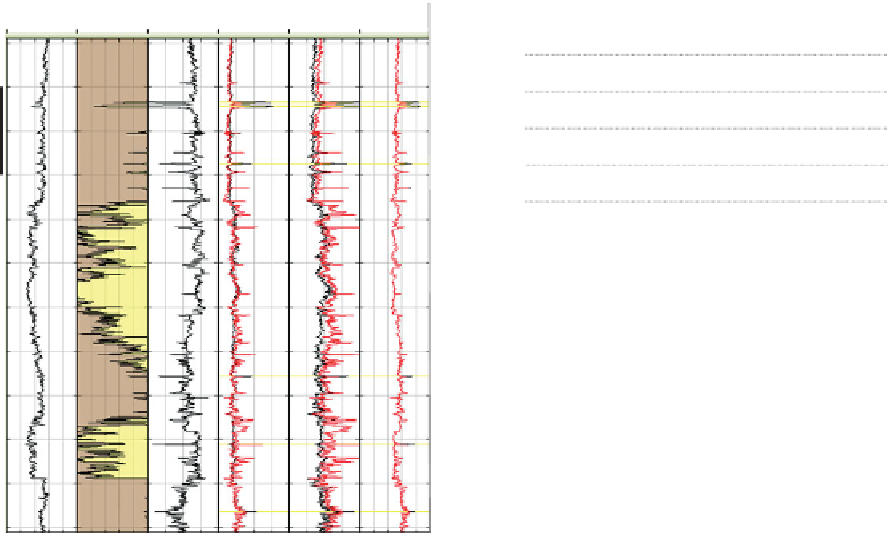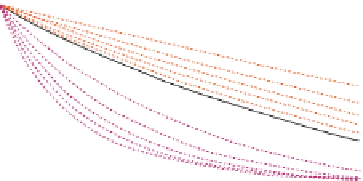Geology Reference
In-Depth Information
α
Ref
=0.15,
α
Crack
=0.02,
α
StiffPore
=0.8
GR
V
cl
Phi
t
V
p
V
s
ρ
7
6
5
4
3
2
1
0
150
0
1
0
0.4
2000
6000
500
2500 1.45
2.95
20%
100%
100%
20%
0
0.10
0.20
0.30
0.40
Porosity
Figure 8.39
Predicted effect of pore type on P wave velocity in
carbonates (after Xu and Payne,
2009
). The matrix is assumed to be
calcite and α is the aspect ratio. The reference curve (α ¼ 0.15)
represents a system with only interparticle pores, whereas the curves
below the reference represent systems with increasing fractions of
crack-type pores (α < 0.15) and those above it represent increasing
fractions of stiff pores (α > 0.15).
General well parameters
-
water depth, elevation
of log datum.
Reservoir parameters
·
Figure 8.38
Application of the Xu-White model to a 600 m
logged sand/shale section: black ¼ log curves, red ¼ Xu-White
predictions.
pore pressure,
temperature.
·
Drilling mud
·
Gassmann method. Therefore, the microcracks are
added into the effective medium model as isolated
water-wet pores, and only the interparticle and stiff
pores are added by the dry rock Gassmann fluid
substitution route. This gives a better fit to observa-
tion than applying the dry rock Gassmann calculation
to all of the carbonate porosity.
-
type
oil based/water based,
if water based
-
salinity of mud.
·
Fluid parameters
·
salinity of brine ppm or R
w
measurement,
gas index of brine 0
-
1,
·
oil API,
·
oil GOR (scf/stb or litres/litre),
·
8.3 Requirements for a rock
physics study
Although rock physics studies are becoming more
routine, the first task for the interpreter is to locate
all the necessary information. This usually involves
talking with petrophysicists, engineers and geologists.
gas gravity.
·
Log data in depth (with datum information)
sonic, shear sonic, density, other curves
(gamma ray, caliper, neutron, resistivity
(shallow, medium and deep)).
·
Petrophysical information
·
porosity (effective and total), saturation (in the
uninvaded reservoir (S
w
) and in the invaded
zone (S
xo
), mineral fraction (e.g. shale content),
8.3.1 Data checklist
The following well data are typically required to per-
form a rock physics study.
core analysis data if available
·
grain densities, porosities, etc. (with
associated report).
Checkshot data.
Hole deviation data.
Stratigraphic tops.
In terms of log data, both compressional sonic and
density are a minimum requirement. If only a density
178
Composite logs.




































